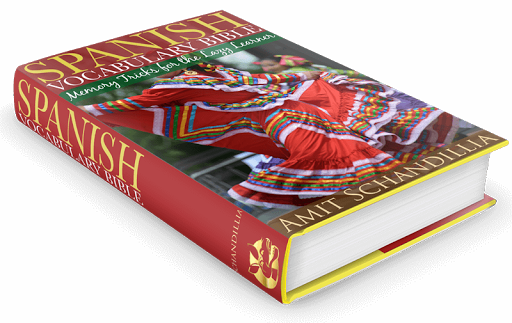A whole new Spanish out there
Time to shelve all that you learned so painstakingly thus far and step off the standard path for a minute. This is the big, bad world of virtual friends and uninhibited chats where time and distance hold no meaning. This is where the best nightlife is at and this is where some of the most authentic street lingo is practiced.
For best results, it’s imperative that your chat buddy speaks nothing but Spanish, not one word. So it’s got to be either Spanish or mute. Imagine your frustration when you are struggling to understand them and even more to express yourself every now and then. Imagine your frustration at having to open up Google Translate® after every message!
Well, that might not bother you if you have already achieved a reasonable proficiency after months of studying. Besides, for every little bit of a rough patch here and there, there’s always Google Translate®, so how bad can it really get anyways! You really think that? Think again, for the Spanish you’d read in those chatrooms would look nothing like Spanish! It might as well be a different language altogether – maybe Martian, who knows! Now imagine your frustration when you realize the words used in those chatrooms are beyond what even that well-trusted Google Translate® could get its head around.
 |
| Text-message Spanish is very different from textbook Spanish Photo credit: Dean Jarvey licensed CC BY 2.0 |
wanna cum? idk
What do you think an unsuspecting foreigner (who knows no chatroom-English) would make of it? Does it even look English? Only you know what it means:
Do you want to come? I don’t know.
And there’s no reason why this cannot happen with Spanish. The Spanish you learned in the classroom would never help you get your head around this seemingly ugly churn of letters:
vns? sip
Yes, that’s Spanish. And it’s composed of pretty familiar words, only inspired by the chatter’s laziness. You might be more comfortable with it in a more formal avatar:
¿Vienes? ¡Si! (Coming? Yep!)
See, how it’s a whole new Spanish when you’re chatting or texting with the natives? Yeah, chatrooms have always been a world away from the classrooms.
Chatroom Spanish
 |
| Chatroom Spanish is nothing like classroom Spanish Photo credit: Justin Dolske licensed CC BY-SA 2.0 |
Speaking of logical derivation, remember that Spanish doesn’t have a exact equivalent of the English “h” sound? The closest you have is the kind of guttural sound of “j” as in jardín (garden). Knowing this, it shouldn’t be surprising that the quintessential English laugh in the chatrooms, “hahaha” or “hehehe”, morph into jajaja and jejeje in Spanish.
Wasn’t that a no-brainer? It all is; after all, it’s only real people who are chatting out there and shorthand is only a very real human tendency. In that aspect, people speaking Spanish are just as lazy as those speaking English and that’s why these shorthands have evolved into a jargon of their own.
The x-factor
Remember the “x” notation from those multiplication tables in English? Yes, that one from those boring math classes. That letter has, for some reasons, evolved into the well-familiar sign of multiplication throughout the English-speaking world and that’s why you read “4 x 5” as “four times five”. This word, “times”, in this sense, translates into Spanish as por which is why we’d read “4 x 5” as cuatro por cinco in Spanish.
Based on this analogy, native speakers have derived a whole jargon of chat shorthand replacing any occurrence of por, per, or par with the letter, “x”. See these words:
- xq/pq – porque /¿Por qué?
- xa – para
- xfa – por favor (in rapid street speech, this phrase often shortens to porfa; you’ll rarely hear a native speaker use the phrasebook-proper por favor)
- xo – pero
- xdon – perdón (note the loss of accent mark in chat lingo)
For some reasons, “x” also often replaces the letters, “ch”, in chatroom Spanish. Not sure if this has got anything to do with the relationship between the words, “Christmas” and “X-Mas” but does that really matter much? Here are some examples:
- exo – hecho
- mxo – mucho
Plain vanilla abbreviations
As with English, not all shorthand expressions in Spanish are creative and thoughtful. Quite a few are just simple abbreviations using the initials of all words in the expression being used. Examples in English would be “tc” for “take care” or “gn” for “good night”. Check out some of them in Spanish:
- tq – te quiero
- tqm – te quiero mucho
- t – te
- m – me
- p. ej. – por ejemplo
- d – de
- b – bien
- tqi/tki – tengo que irme (I have to leave/go)
- q – qué/que
- hl – hasta luego
- m1ml – mándame un mensaje luego (send me a message later / text me later)
- nph – no puedo hablar (I can’t talk)
- npn – no pasa nada (nothing’s happening)
- asdc – al salir de clase (after the class)
Some more abbreviations
There are also cases where words and expressions are simply condensed without necessarily using just the initials. In English, we have plenty of them, such as “cum” for “come” and “wanna” for “want to”. So, how could Spanish not have them!
- toi/toy – estoy
- tas – estás
- cnt – contesta
- bs/bss/bso – beso/besos
- mñn – mañana
- amr – amor
- bb – bebé (baby)
- sbs? – ¿Sabes?
- pa – para
- finde – fin de semana
- pdt – piérdete (get lost)
- qand – ¿Cuándo?/cuando
- c – sé (I know; this is how the letter “c” of the Spanish alphabet is pronounced, hence the choice as this shorthand)
- dfcl – difícil
- dim – dime (tell me)
- dnd – donde/¿Dónde?
- asias – gracias
- bbr – beber
- dcr – decir
- hla – hola
- msj – mensaje
- fsta – fiesta
- vns? – ¿Vienes? (Are you coming?)
- spro – espero
- tb – también
- tas OK? – ¿Estás bien?
Since when did Spanish get a “k”?
Never. But its sound still echoes in Spanish guised as either “ca” or “qu”. Hence, it’s only logical that “k” be invoked whenever words containing this sound are to be abbreviated in chat and text.
- ksa – casa
- ksi – casi
- aki – aquí
- km – como/¿Cómo?
- kntm – cuéntame (tell me)
- kls – clase
- kyat – cállate (shut up)
The number game
Quite a few shorthands in Spanish use numbers for the similarity of their pronunciation to that of the syllable they replace in the expression in question. See them in action here:
- salu2 – saludos
- a2/a10 – adiós
- b7s – besitos
- 100pre – siempre
Some more chat fun
Some words are just modeled after popular colloquial English expressions simply because they lack direct equivalents in Spanish:
- sip – si (yep)
- nop – no (nope)
Some just follow a simple logic of replacing a syllable with an English letter that represents its pronunciation. For example, even though Spanish doesn’t have the letter, “w”, you still get these abbreviations in chat lingo:
- wpa/wpo – guapa/guapo
- iwal – igual
Also, the letter, “ll”, is often replaced by “y” for ease of typing:
- ymm/ymam – llámame (call me)
- eys – ellos/ellas
As obvious, the letter, “h”, being silent, has no place in chat lingo and is usually omitted:
- q acs? – ¿Qué haces? (What are you doing?)
- ems – hemos (we have)
- aora – ahora
Armed with this list, you can now confidently venture into any discussion with those lovely Latinos, well-assured that their Spanish will no longer be Greek to you!












.png)
This is awesome! I am a gringa Spanish teacher, but I don't have experience with all of these abbreviations myself. I think my students might enjoy learning some of these. Thanks!
ReplyDeleteGlad you find them useful, Kimberly. Although this is not textbook Spanish, a little diversion is surely a good way to stay inspired and intrigued in the class. :)
ReplyDelete